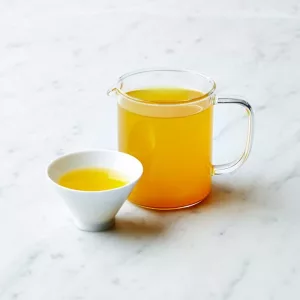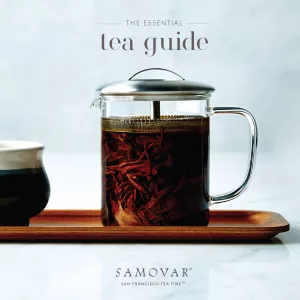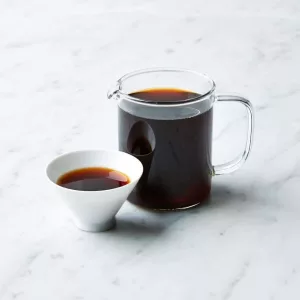
Sure, some folks may have what constitutes as a religious commitment to that morning cup, but those snaky lines, noisy steam and the jolting nature of caffeine in coffee can make mindfulness a pretty tall order. Good ol’ coffee and conversation considered, we’ve come to associate the dark pick-me-up more with passion and productivity then we do with self-contemplation.
Tea, on the other hand, brimming with grace and femininity, was ennobled centuries ago into a religion of aestheticism – Teasim, if you will. According to Kakuro Okakura’s Book of Tea, “Teaism is a cult founded on the adoration of the beautiful among the sordid facts of everyday existence. It inculcates purity and harmony…worship of the imperfect…and is a tender attempt to accomplish something possible in the impossible thing we know as life.” Today, tea is hot, and its popularity symbolizes the shift in America’s values toward living a less stressed, more tranquil lifestyle.
The inspiration behind all these thoughts of coffee, tea and duality was my pursuit of the tranquil new American dream at a Buddhist meditation retreat over New Years. Steering the silent ride to the land inside of our minds was Shinzen Young, a western teacher of eastern Vipassana or Insight meditation. There, a student of Shinzen’s who was also an avid tea practitioner provided an opportunity for us to take part in the Cha-no-yu ritual (literally “hot water for tea”).
Transforming the lobby of the aged, Catholic retreat center into a tasteful teahouse, she demonstrated her agility with powdered green tea, known as Matcha, meticulously preparing servings to a small group of us in the tranquil setting. We were taught that the study and mastery of the tea ceremony takes many years, often lasting one’s lifetime. Just participating as a guest in the semi-formal Cha-no-yu required me to study and learn general tearoom deportment, prescribed gestures and phrases and the proper way one takes teas and sweets.
Given my affiliation with Samovar, I got to thinking… thinking… and thinking a bit more (a phenomena I now understand consists of body sensations, self-talk, and visual images emanating from my mind). Why, I wondered, is it that one doesn’t cross paths with more black-robed, Buddhist devotees sipping Soy lattes? Why the stronger link between enlightenment and coffee’s cuz, this slightly bitter beverage served hot? Scratching around a bit, I discovered that tea, like coffee, had been bound up through the ages with popular cultural values. The tea social experience, however, was more closely tied to ritual, often occupying the center of certain ceremonial practices. Established rites like the Japanese Tea Ceremony I experienced, strongly influenced by Zen Buddhism, sought to divide the world between the sacred and the profane (or everyday) in the effort to establish community or create a social experience.

Those fortunate enough to have taken a seat at one of Jesse’s Tea Tastings have sensed a similar energy of reverence and nobility. To the unenlightened eye, it may appear to be a creative marketing medium that helps move product. But look a little closer… and you just might catch a glimpse of Samovar’s skillful tea shaman upholding a living legacy of relaxation, pleasure, dignity, and delight.
Which brings it around full circle for me. Shinzen explained that we’d all soon be faced with “aftershock” and “afterglow,” his terms for the positive and negative feeling states experienced during turbulent, post-retreat reentry into a clattering modern world. He encouraged us to work at meditating daily, while seeking out places and people that supported our practice. Okakura’s charge to “know the stillness that makes the impossible possible,” echoed in his words. I can’t help but thinking… thinking… thinking… how Jesse’s efforts have made Samovar one of hose magical places that assists patrons and pilgrims in finding the harmony, the serenity and the sacred underlying our everyday world.





